
Aizome (indigo dyeing) is one of the traditional crafts that represents Japan. The deep and beautiful indigo color attracts our hearts. Indigo dyeing, which has a unique texture, has been closely related to the lives of Japan people since ancient times, such as tenugui ( japanese hand towel) , yukata robes, furoshiki, and baby clothes. The uniform of Japan's national soccer team, known as "Samurai Blue", also has its roots in this indigo color. In this article, we will introduce the history, culture, and effects of Aizome (indigo dyeing) , and how to adopt it into your current life.
* If you purchase or make a reservation for the products introduced in the article, a part of the sales will be FUN! It may be returned to JAPAN.
What is Aizome?

Aizome is a traditional dyeing technique that uses dyes extracted from Ai (indigo plant) to dye cloth. In addition, the dyed fabric itself is also called Aizome. The deep and beautiful blue color of Aizome is also called "Japan blue" and is loved all over the world as one of the colors that symbolize Japan.
The main raw material for indigo dyeing is Ai, a plant of the Polygonaceae family. There are various types of Ai, such as Tadeai (Japanese indigo), Indian indigo, and woad, but in Japan, Tadeai is mainly used. Tadeai is produced in Hokkaido, Aomori, Hyogo, Tokushima and Okinawa prefectures.
Originally, Ai grew naturally in many parts of the world and has been used as a medicinal herb with a variety of health benefits. Even in Japan, it has been an important part of people's lives since ancient times, not only as a raw material for dyeing, but also as a decoction, drinking, and eating.
The process of Aizome
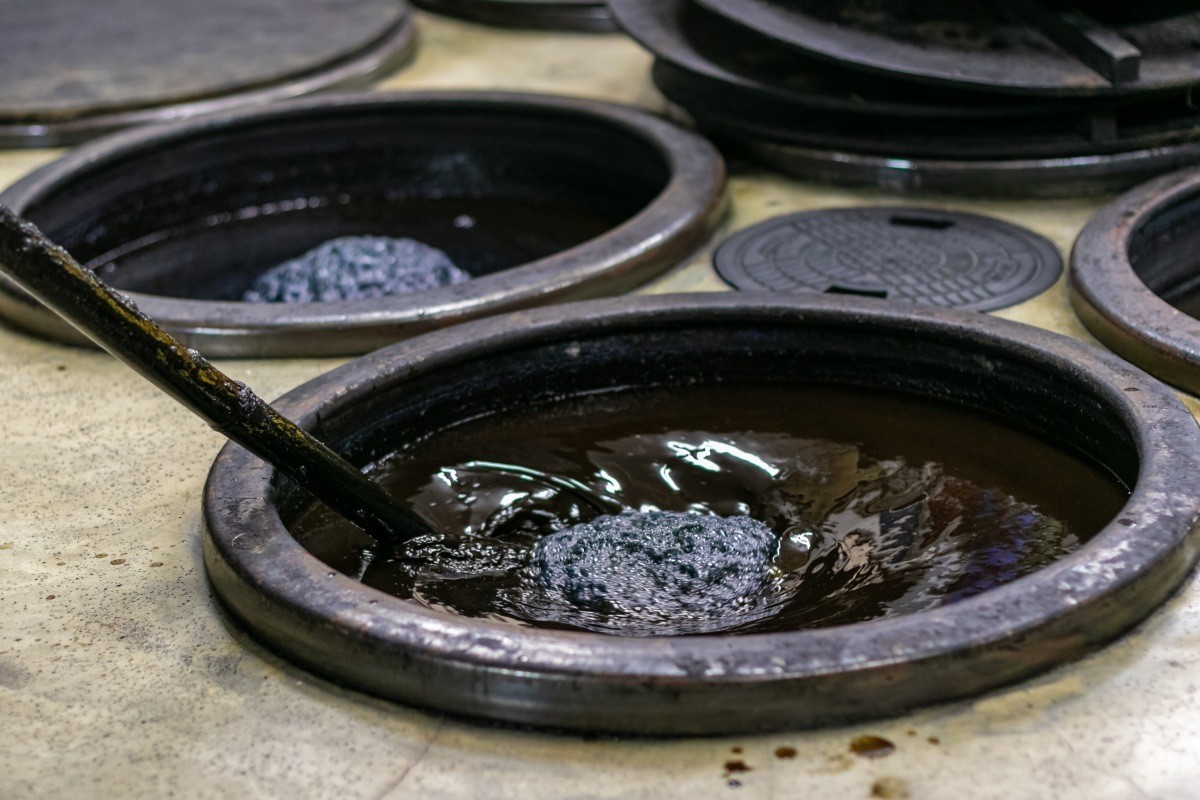
The process of Aizome ranges from the cultivation of Ai to dyeing.
1. Cultivation of Ai: Around the beginning of March, seeds of Ai are sown and carefully cultivated.
2. Drying and fermentation: From late June to summer, the harvested Ai plants are dried and fermented to create sukumo, the dye material.
3. Preparation of Ai pots: Seeds are placed in an aigame*1 and fermented with lye, lime, and other ingredients to produce the dye liquid.
4. Dyeing: The cloth is dipped into the dye liquid and then exposed to air to bring out the indigo color. This process is repeated 10 to 20 times until the desired depth of color is achieved.
5. Washing and drying: The dyed cloth is rinsed in water and then dried.
*1 A pot that stores the Ai dye liquid.
History of Aizome

The origin of Aizome is very old, and the remains of indigo dyeing tanks have been found in the ruins of the Indus Valley Civilization around 3000 BC. In ancient Egypt, indigo-dyed cloth was also used for Tutankhamun's mummy. It is said that it was introduced to Japan from China via the Silk Road during the Asuka to Nara periods.
When it was first introduced to Japan, it was primarily associated with aristocratic culture. During the Heian period, it was a noble color mainly worn by the imperial court and upper nobility. Numerous indigo-dyed fabrics from that era are preserved in temples such as Horyuji (Horyu Temple) and Shoso-in.
In the Edo period, Aizome became widely popular among common people and an essential part of daily life, especially since it paired well with the cotton fabric that was becoming more common at the time. Aizome was used for a variety of purposes, including clothing and everyday goods—especially for items such as samurai armor liners, commoners’ daily wear like kimonos, obi (sashes), work clothes, yukata (summer kimono), and noren (Japanese hanging curtain). However, in the Meiji era, with the advent of synthetic dyes and the use of cheaper, faster-dyeing Indian indigo, the production of domestic indigo drastically declined, and traditional Aizome began to fade.
Connection between Japan culture and local communities
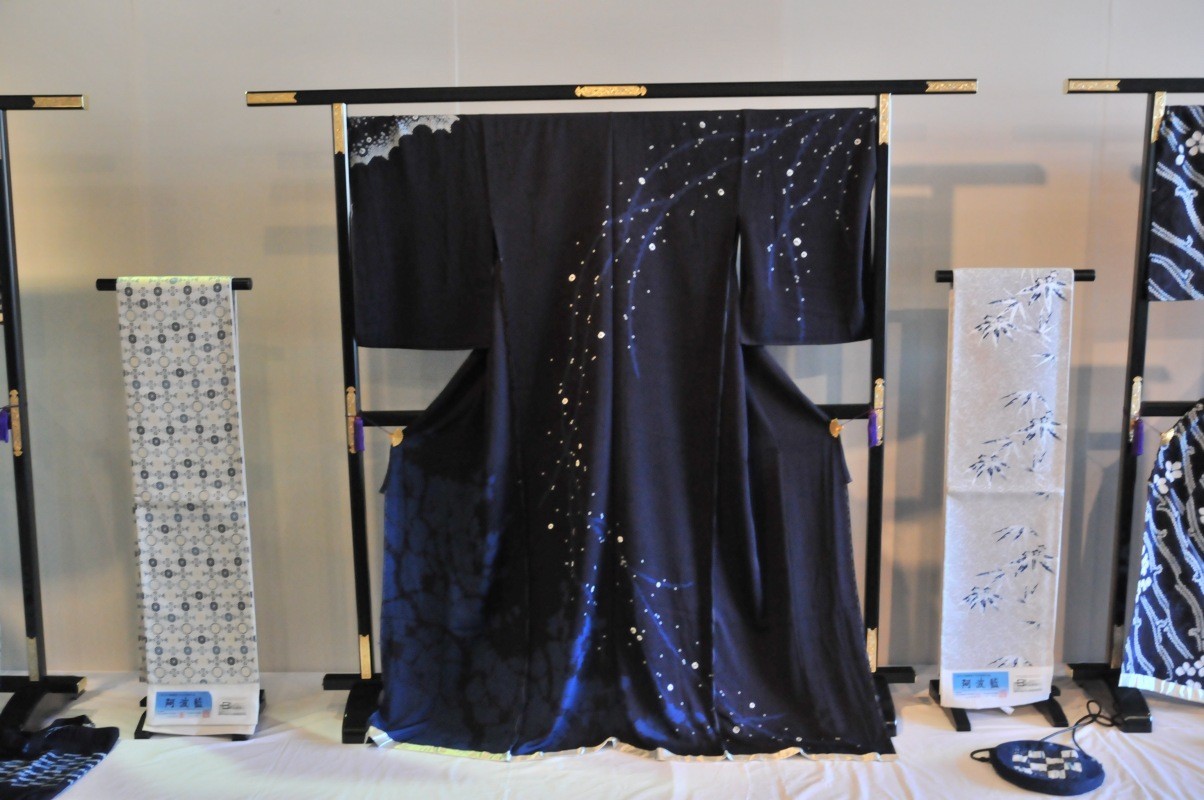
Aizome is deeply rooted in Japan culture and life. Aizome kimonos, noren curtains, and tenugui cloths continue to convey Japan’s traditional aesthetic sense to this day.
It is deeply connected to local industries, and local people have nurtured their own Ai culture according to the climate and environment of each place throughout Japan. In particular, "Awa Ai" in Tokushima Prefecture and "Izumo Ori" in Shimane Prefecture are known. "Bushu Ai" from Saitama Prefecture is also recognized as a renowned production area. Fukaya City in Saitama, is the birthplace of Eiichi Shibusawa, who is featured on Japan’s current 10,000 yen bill and was once very prosperous in the trade of Aidama (solidified block of indigo dye).
Efficacy of Aizome

Aizome has not only beautiful colors, but also various effects.
Antibacterial and insect repellent effects
Since it has a natural antibacterial and insect repellent effect, it can be expected to help keep clothes and bedding clean. In the Edo period, Aizome kimonos were placed in chests of drawers to prevent insects, and even Aizome kimonos, hand covers, and leg bands were worn when working in the fields to ward off insects and snakes. Aizome was an indispensable item in life.
Aizome was also used in noren curtains, hung at storefronts and on the edges of rooms for sunshade and privacy. In kimono shops, Aizome garments were used to repel insects and mosquitoes, while in restaurants, it helped prevent bugs from sticking to the products.
In addition to its insect-repellent properties, Aizome was valued for its durability and cleanliness. Samurai wore Aizome undergarments beneath their armor for protection. The anti-inflammatory and antibacterial properties of Ai, particularly its "tryptanthrin" component, were also recognized which made Ai masks gained attention during the COVID-19 pandemic.
As Aizome fabrics are repeatedly worn and washed, the color gradually softens and blends into the skin. This is why large Aizome furoshiki cloths were used for wrapping babies after baths, as they are gentle on the skin and have deodorizing and antibacterial effects. Aizome baby clothes are being re-evaluated for these reasons.
Deodorizing effect
AIizome has a deodorizing effect which can help reduce sweat and body odor. Due to their anti-odor effect, Aizome socks are popular.
UV protection
Aizome also offers protection against ultraviolet (UV) rays, making it a helpful option for sun protection. Aizome items such as parasols, hats, and arm covers are highly recommended.
Heat retention
Fabrics dyed with Ai are known to help retain body heat, making them ideal for people who are sensitive to the cold. Aizome underwear and socks are believed to be effective in combating coldness. The material is also known for being resistant to both fire and water. Due to its durability and high insulation, Aizome was used in the Edo period for the uniforms of firemen, as well as by railway workers tending steam locomotive boilers and sailors. Its water resistance also made it a popular choice for formal wear among fishermen.
Relaxation Effects
The Ai color is believed to have a calming, relaxing effect. Ai leaves are rich in polyphenols and dietary fiber, and Ai tea, which is caffeine-free, is said to promote relaxation.
Expected medicinal effects
Ai is believed to have medicinal properties such as detoxification and hemostasis, and has been used since ancient times as a medicinal plant for detoxifying the body, reducing fever, and relieving inflammation. In recent years, studies on Tadeai (Japanese indigo) have advanced, revealing that it contains polyphenols, which are powerful antioxidants, and tryptanthrin, an antibacterial compound. In traditional Chinese medicine, Ai is also said to be beneficial for sensitive skin and conditions like atopic dermatitis.
Bringing Aizome into everyday life
Following Japan’s rapid economic growth after World War II, daily life became more convenient and the benefits of Aizome were gradually forgotten. Today, many people are unfamiliar with its traditional uses. However, Aizome fabrics are still being used in a variety of ways, including fashion items and home decor. Because it uses natural materials, Aizome is also gaining attention as an eco-friendly and sustainable practice. Why not rediscover the beauty of Aizome and incorporate it into your daily life?
🛒 Find Aizome masks (Yahoo! Shopping)
🛒 Find Aizome socks (Yahoo! Shopping)
🛒 Find Aizome shirts (Yahoo! Shopping)
🛒 Search for "jeans", a representative of familiar indigo clothing (Yahoo! Shopping)
Let's try Aizome
Why not try an Aizome experience and feel traditional Japanese culture?
[kkday]👉 Food Sample Making & Indigo Dyeing Experience in Asakusa
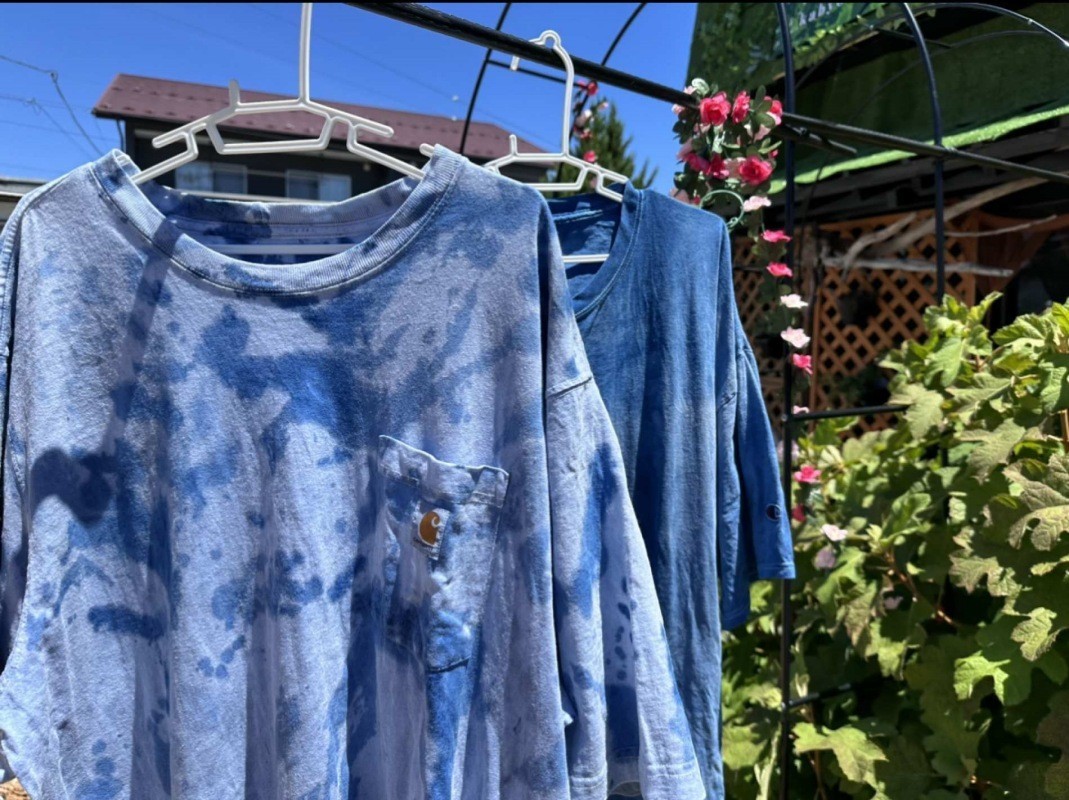
Important Notes When Using Aizome Products
※Please check the care instructions provided with your purchase to prevent color fading or dye transfer when using Aizome dyed items.
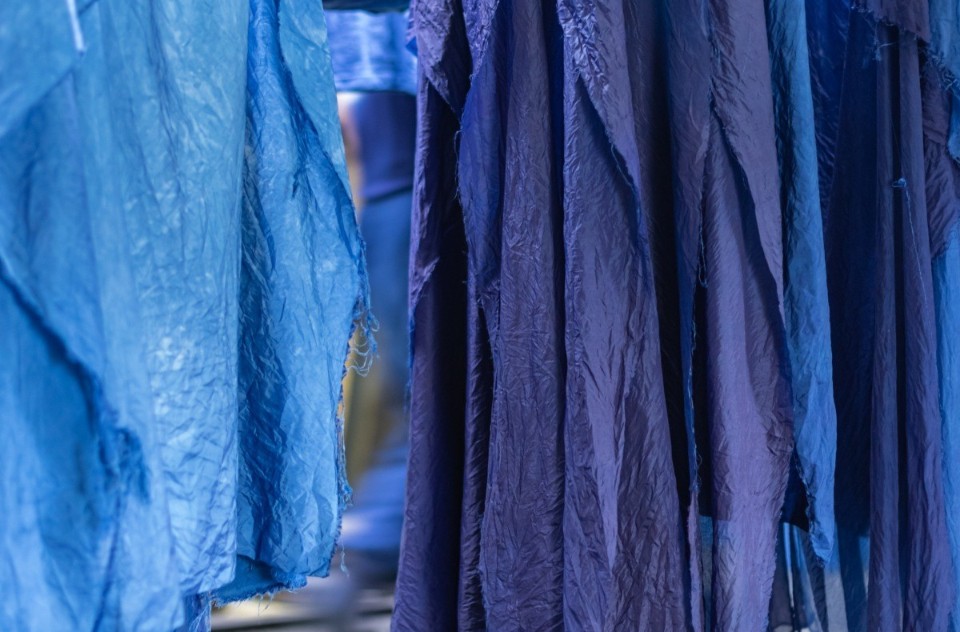
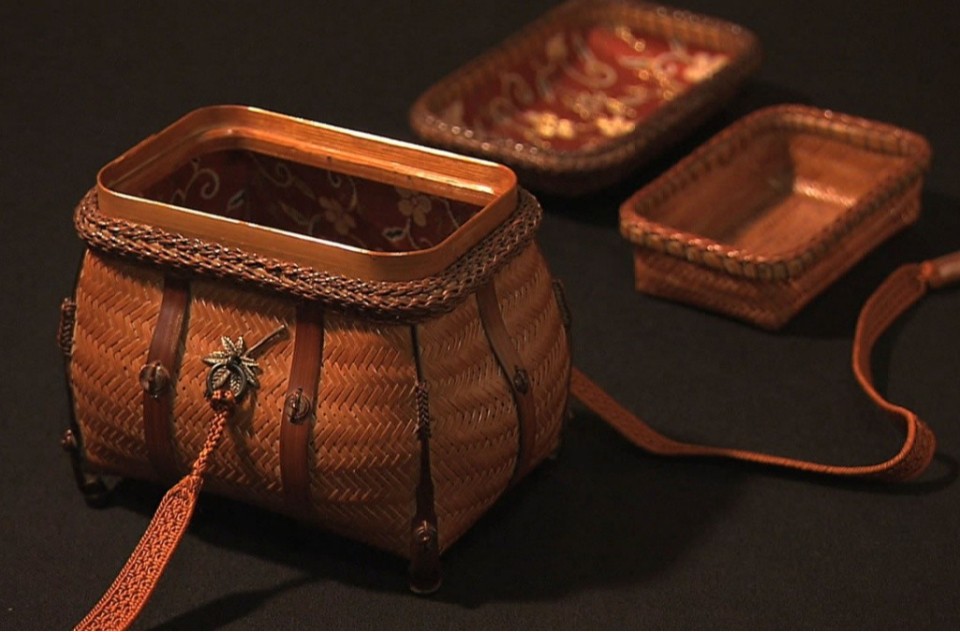
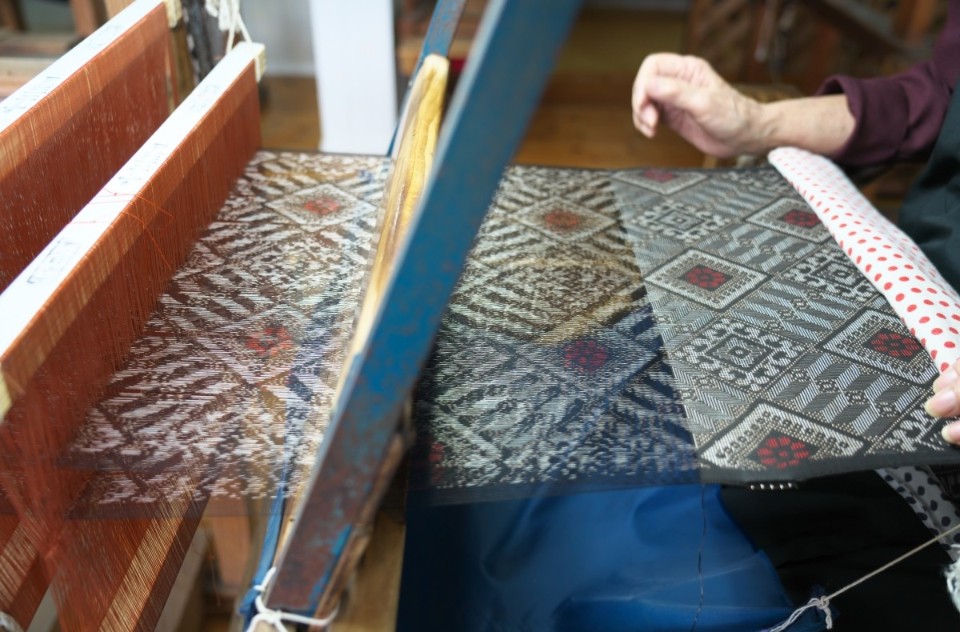
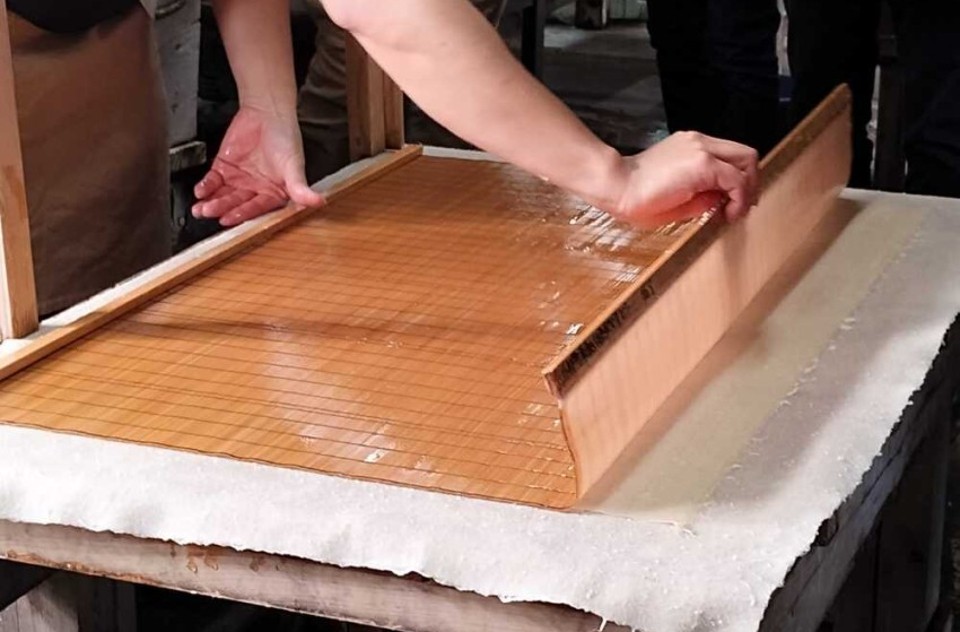
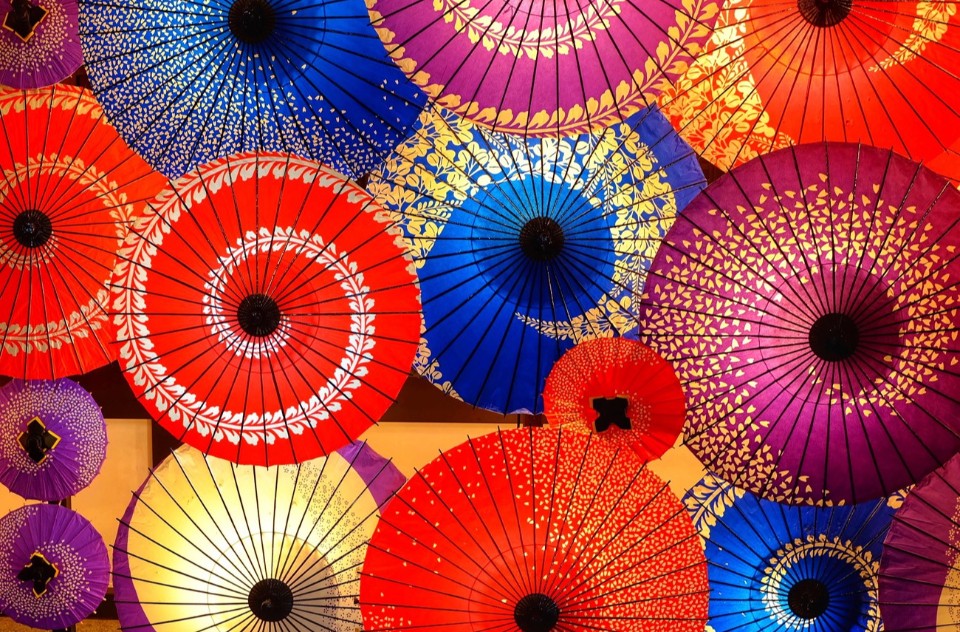
Comments